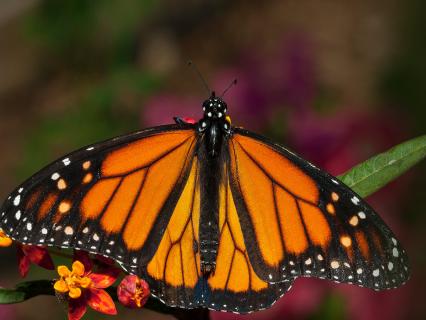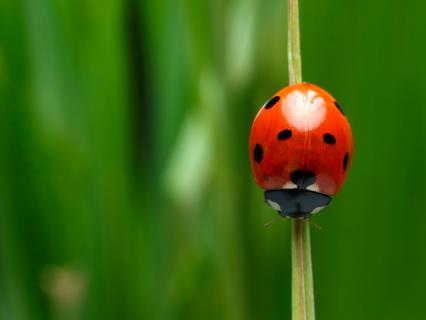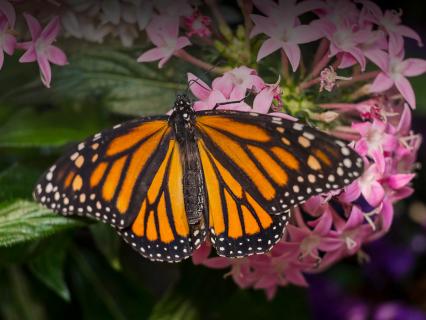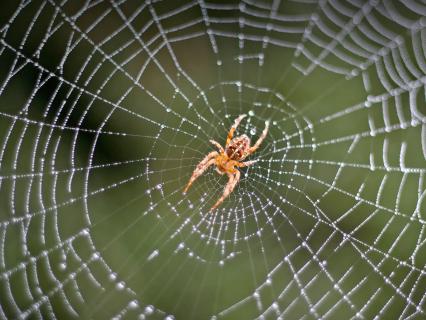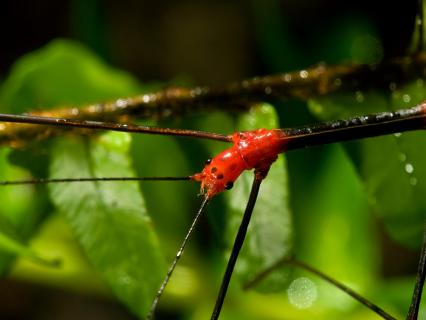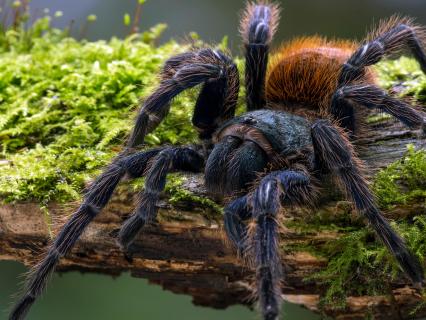
Arthropods
Defining Characteristics:
Invertebrates
Exoskeleton (external skeleton)
Segmented body
Jointed appendages
Arthropods are members of the phylum Arthropoda, which means "jointed leg."
Arthropods include insects, arachnids, and crustaceans.
There are more kinds of beetles in the world than any other type of animal, invertebrate or otherwise.
Arthropods is a phylum that includes insects and spiders. They are invertebrates, which means they do not have an internal skeleton and backbone. Instead, they have a hard exoskeleton on the outside, the top layer of which is known as the cuticle. The cuticle is made out of proteins and is very versatile. It can be thick and hard for protection, thin and soft for flexibility, and even stretchy for movement. It can be heavy or it can be light to allow for flight. It can be permeable, letting water or gases in and out, or it can be solid and waterproof. It can also be different colors. Your skin is different on different areas of your body, and an insect’s cuticle is, too, because it serves many purposes. Because the cuticle is so versatile, this main feature has allowed insects to become one of the most successful groups of animals on Earth.
Six and Eight Legs
An insect’s body is divided into three main parts: the head; the middle section, called the thorax; and the end section, called the abdomen. A spider's body has two segments: a cephalothorax and an abdomen. Insects have a brain, a nervous system, a heart, a gut for digestion, and tubes called tracheae to breathe oxygen. They have two antennae and six legs, both of which have special organs on them to sense sound vibrations and movement, and to "taste" and "smell" food (although they don’t have taste buds and noses like we do). Spiders have eight legs and, in general, have "simple" eyes instead of the "compound" eyes that give many insects much better vision.
Life Cycles
Most insects, such as beetles, wasps, and flies, go through complete metamorphosis. They begin life as an egg that hatches to a larva. The larva eats, grows, and sheds, then turns into a pupa in which chemical changes take place. The final stage is changing into the adult insect, which is able to reproduce. In more primitive insects, such as grasshoppers and stick insects, another type of development is used. This process is called incomplete metamorphosis where the insect hatches from the egg as a miniature version of the adult. The insect continues to grow, and every time it molts it gets larger until it reaches adulthood.
Groupings
Insects are divided into two main groups: the wingless insects like bristletails and silverfish; and the winged insects like dragonflies, cockroaches, grasshoppers, stick insects, beetles, flies, butterflies, ants, and bees. Many people think that spiders are insects—they are not. Spiders belong to a different group called arachnids, which also includes scorpions. There are nearly one million known species of insects, and more are being discovered each year. However, many are also lost each year due to habitat destruction, and many of these we may never even have known existed.
Everywhere
Insects can be found in just about every type of habitat on Earth. Some cricket relatives live actively in snow, and there are beetles and cockroaches that live in the hot sands of deserts. Many insects survive harsh conditions by burrowing and remaining inactive, and some can even survive for years after being completely dried out—they revive when placed in water! Adult insects can range in size from less than 0.08 inches (0.2 millimeters) in tiny wasps to 12 inches (30 centimeters) in stick insects. The largest insects can weigh up to 2.5 ounces (70 grams). The largest spiders can weigh up to 3 ounces (100 grams). Did you know that there are more kinds of beetles in the world than any other type of animal, invertebrate or otherwise? And did you know that the weight of ants alone is roughly equal to the weight of all human beings on Earth?





